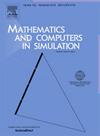光伏应用的分层PV到PV串联差分功率处理:功率流和转换器额定分析
IF 4.4
2区 数学
Q1 COMPUTER SCIENCE, INTERDISCIPLINARY APPLICATIONS
引用次数: 0
摘要
光伏(子)组件之间的不匹配严重降低了光伏(PV)系统的发电量。为了解决这个问题,一种被称为PV-to-PV (PV2PV)串联差分功率处理(SDPP)的解决方案已经在文献中进行了深入的探讨。然而,传统的PV2PV SDPP架构会导致所谓的“累积效应”,这会显著增加构成该架构的变流器处理的总功率以及它们的组件额定值。本文将重点介绍分层PV2PV SDPP架构,作为缓解此问题的替代方案。推导了描述分层PV2PV SDPP结构运行的方程,并对其性能进行了分析。对传统PV2PV SDPP体系结构与分层结构进行了比较,并在MATLAB/Simulink环境下进行了仿真,验证了分层结构降低累积效应,提高光伏系统发电量的能力。本文章由计算机程序翻译,如有差异,请以英文原文为准。
Hierarchical PV to PV series differential power processing for photovoltaic applications: Power flow and converter rating analysis
The energy yield of Photovoltaic (PV) systems is significantly reduced by mismatch among PV (sub)modules. To counter this, a solution known as PV-to-PV (PV2PV) Series Differential Power Processing (SDPP) has been thoroughly explored in literature. However, conventional PV2PV SDPP architectures can lead to the so-called “accumulation effect”, which significantly increases the total power processed by the converters forming the architecture as well as their component ratings. This paper focuses on a hierarchical PV2PV SDPP architecture as an alternative to mitigate this issue. The equations describing the operation of the hierarchical PV2PV SDPP architecture are derived and its performance analyzed. A comparison between conventional and hierarchical PV2PV SDPP architectures is conducted, and simulations in MATLAB/Simulink environment validate the hierarchical architecture's ability to reduce the accumulation effect, enhancing PV system energy yield.
求助全文
通过发布文献求助,成功后即可免费获取论文全文。
去求助
来源期刊

Mathematics and Computers in Simulation
数学-计算机:跨学科应用
CiteScore
8.90
自引率
4.30%
发文量
335
审稿时长
54 days
期刊介绍:
The aim of the journal is to provide an international forum for the dissemination of up-to-date information in the fields of the mathematics and computers, in particular (but not exclusively) as they apply to the dynamics of systems, their simulation and scientific computation in general. Published material ranges from short, concise research papers to more general tutorial articles.
Mathematics and Computers in Simulation, published monthly, is the official organ of IMACS, the International Association for Mathematics and Computers in Simulation (Formerly AICA). This Association, founded in 1955 and legally incorporated in 1956 is a member of FIACC (the Five International Associations Coordinating Committee), together with IFIP, IFAV, IFORS and IMEKO.
Topics covered by the journal include mathematical tools in:
•The foundations of systems modelling
•Numerical analysis and the development of algorithms for simulation
They also include considerations about computer hardware for simulation and about special software and compilers.
The journal also publishes articles concerned with specific applications of modelling and simulation in science and engineering, with relevant applied mathematics, the general philosophy of systems simulation, and their impact on disciplinary and interdisciplinary research.
The journal includes a Book Review section -- and a "News on IMACS" section that contains a Calendar of future Conferences/Events and other information about the Association.
 求助内容:
求助内容: 应助结果提醒方式:
应助结果提醒方式:


